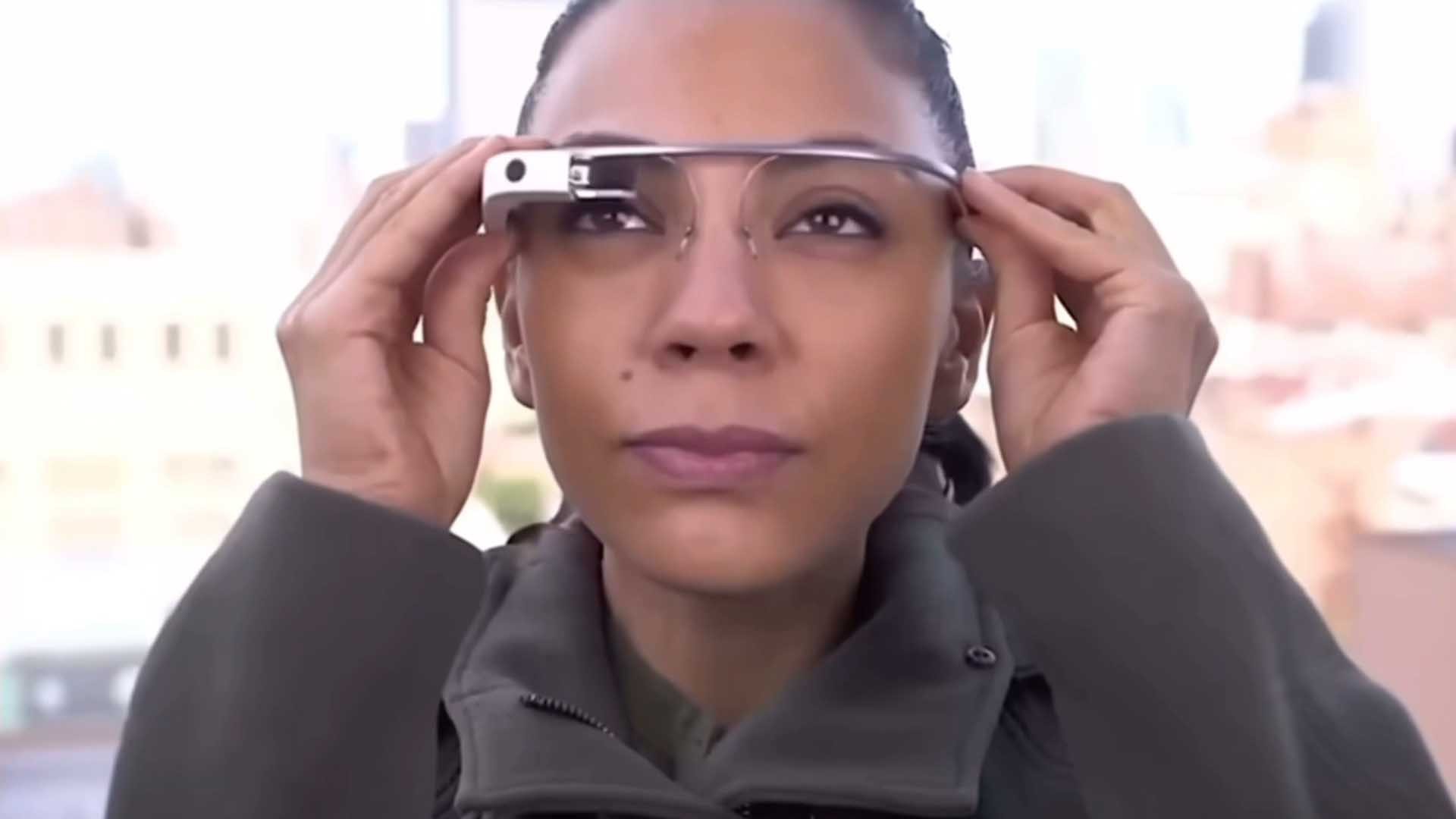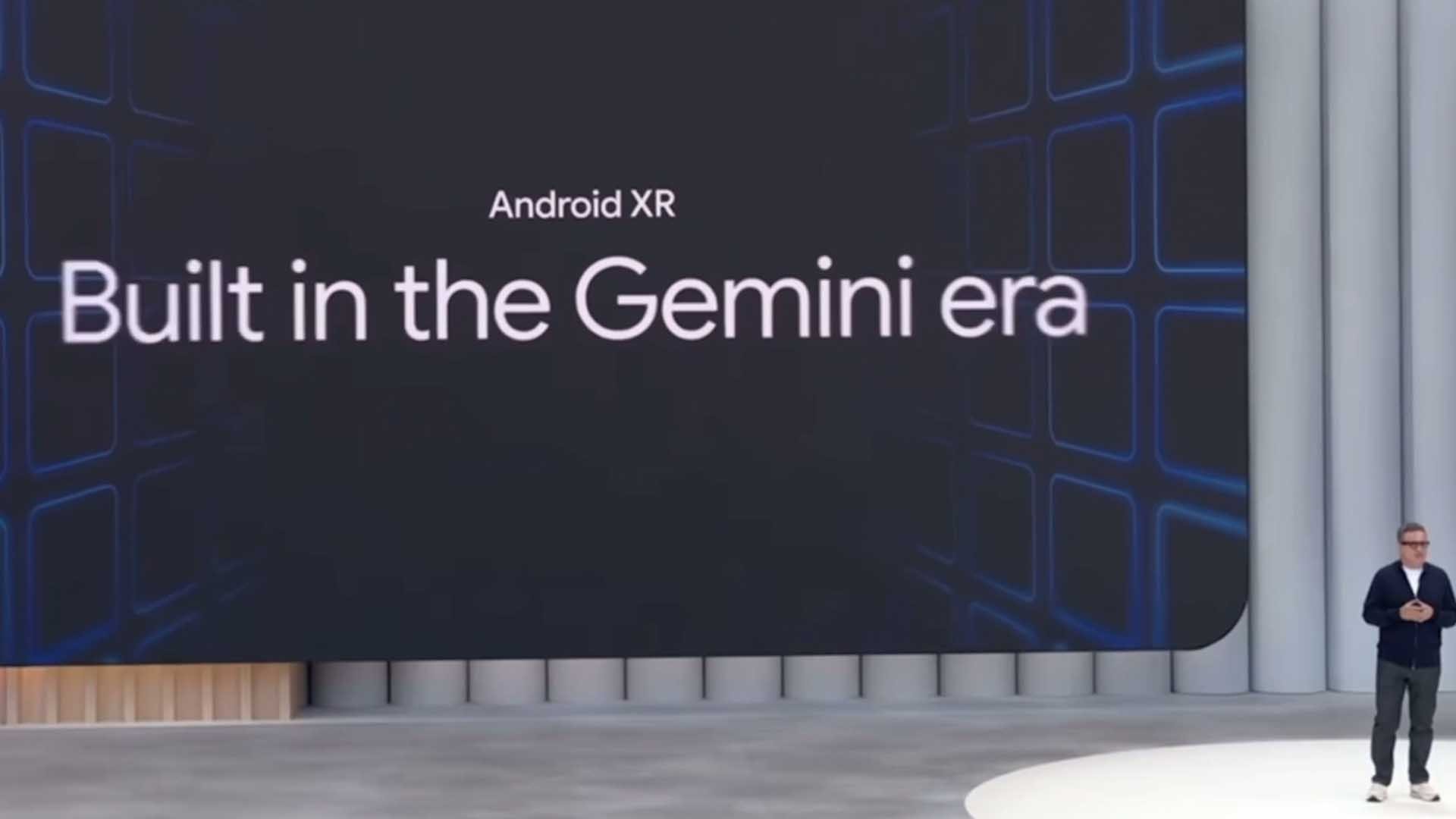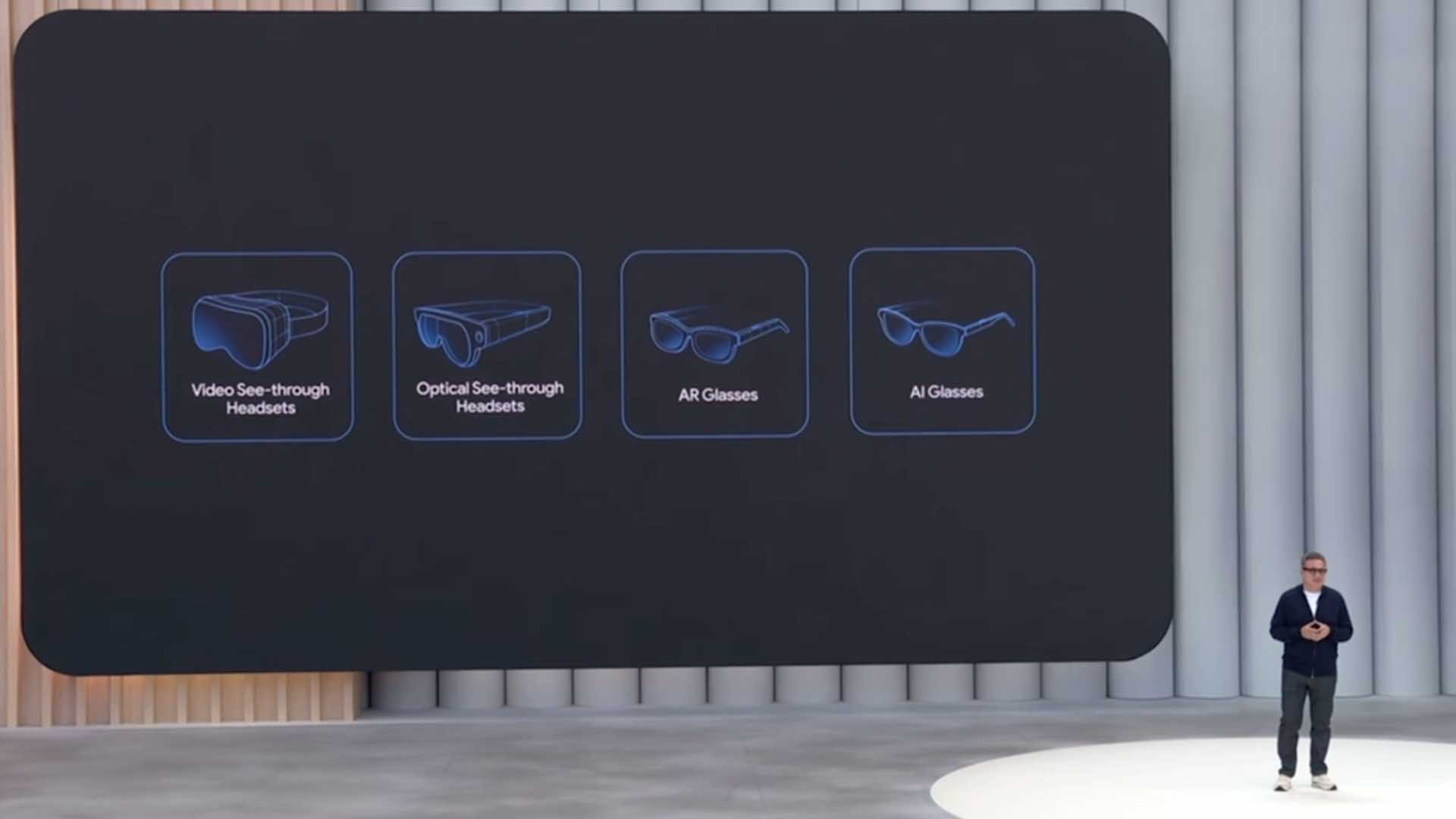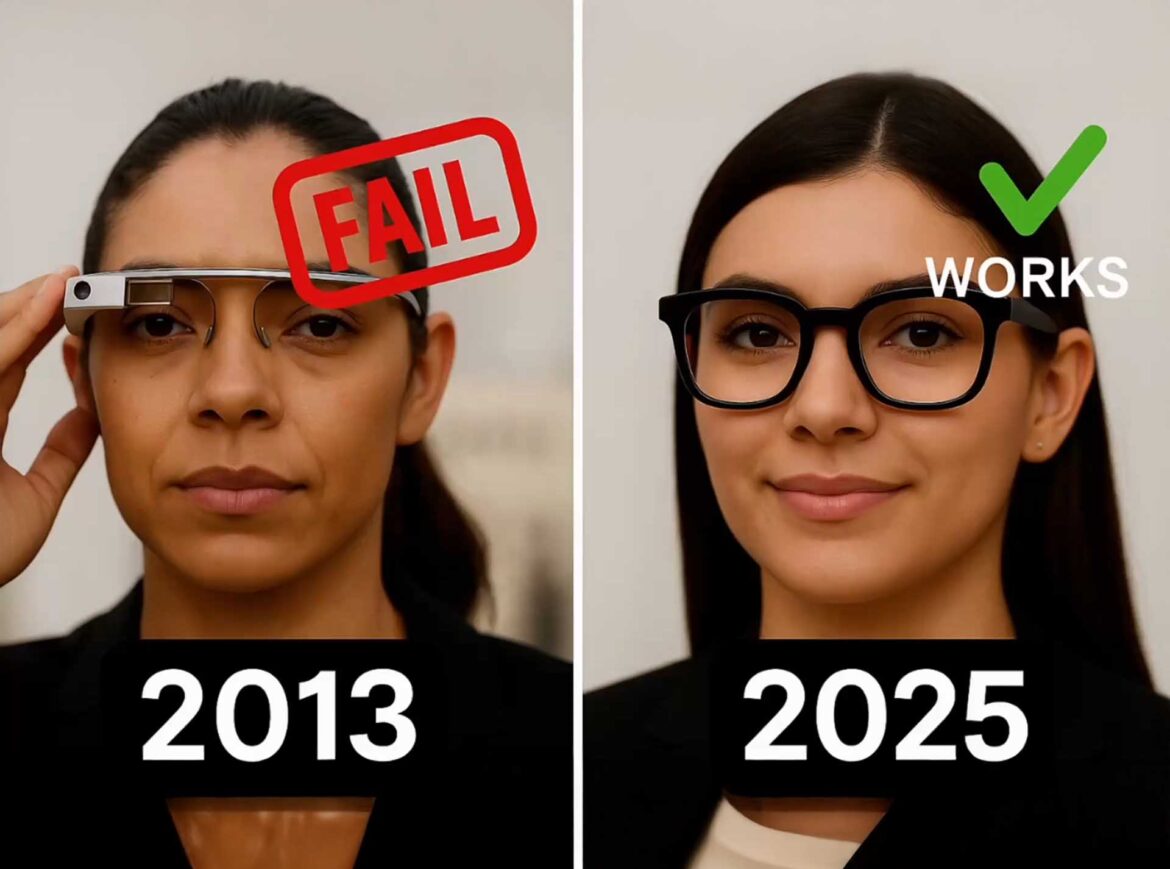Smart Glasses Reloaded – Google makes a fresh start with Android XR and Gemini AI
Image: Google I/O 2025 | Edited by: Ulrich Buckenlei
After the failure of Google Glass, the tech giant is making a new attempt in 2025: With Android XR and Gemini AI, Google presents an open platform for smart wearables, immersive communication, and AI-powered interaction. The strategy? Everyday usability, developer focus, and a strong partner stack from fashion, hardware, and AI.
Looking back – Why Google Glass failed
In 2013, Google introduced a product ahead of its time: Google Glass. But technical ambition met cultural resistance. Privacy concerns, lack of apps, and an immature design prevented acceptance. The concept was there – but the market wasn’t ready.
- Unfinished hardware with too-visible tech
- No convincing everyday use cases
- Social rejection in public spaces

Google Glass 2013 – technologically bold, but culturally not accepted.
Image: Google | Screenshot / Edited by: Ulrich Buckenlei
Fresh start with vision – Android XR and Gemini AI
In 2025, Google returns with a structured XR ecosystem. Android XR clearly distinguishes between immersive headsets and augmented glasses. The platform relies on Gemini AI for personalized interaction, new AI use cases, and wearable designs that work in everyday life.
- Design collaborations with Warby Parker & Gentle Monster
- Use cases: navigation, messaging, context-awareness
- XR headsets & glasses as separate UX categories

Android XR 2025 – wearable, stylish and AI-ready.
Image: Google I/O | Screenshot / Edited by: Ulrich Buckenlei
The new ecosystem – open, scalable, developer-focused
Android XR’s greatest strength lies in its open approach: developers get access to the platform, supported by Samsung, Qualcomm and leading eyewear manufacturers. The goal is a new infrastructure for AI-based Extended Reality – with a focus on everyday usability and integration.
- Developer access starting in 2025
- Strong partners from fashion and tech
- XR with real-life value instead of tech demos

XR meets developer ecosystem – Google opens the platform.
Image: Google I/O | Screenshot / Edited by: Ulrich Buckenlei
Competition is here – Meta, Lenovo, XREAL & Co
Google is not alone. Meta with Ray-Ban Smart Glasses, Lenovo with Legion Glasses, and XREAL with Air 2 Pro are already active in the market. The race for user-friendly, AI-powered glasses is on – with different approaches in UX, pricing, and availability.
- Meta: AI messaging + camera in designer glasses
- Lenovo: gaming & productivity with display glasses
- XREAL: lightweight, affordable AR displays for on the go

The competition doesn’t sleep – Smart Glasses 2025 in direct comparison.
Image: Meta / Lenovo / XREAL | Montage: Ulrich Buckenlei
Infographic: Evolution of Smart Glasses
The following infographic shows the technological and strategic development of smart glasses at Google – from the beginnings with Google Glass (2013) through the industrial Enterprise Edition to the new Android XR platform with Gemini AI. It visualizes how focus, target groups, and technological maturity have evolved over the years. Particularly clear is the shift from hardware-driven experiments to an open, AI-supported platform with real everyday value.
- 2013: Google Glass – technical prototype with social resistance
- 2017: Enterprise Edition – industrial use, but no mass adoption
- 2021–2023: Strategic realignment and internal retreat
- 2025: Android XR with Gemini AI – open platform, partner network, and daily usability

From Google Glass to Android XR – the four evolution stages of smart glasses.
Visualization: Ulrich Buckenlei / Visoric GmbH
Video: Android XR in action – Gemini AI on stage
The video shows the keynote and demos from the Google I/O event – including live presentations of Android XR, AI use cases, and spatial features for glasses and headsets. The integration of Gemini AI into everyday life is the focus.
- Spatial messaging & AI presence with Android XR
- Live demos with smart glasses and XR headsets
- Technology in everyday life – real and useful
Google I/O 2025 – Android XR and Gemini AI in live use.
Video: Google Keynote / Edited by: Ulrich Buckenlei
Get in touch now – with the Visoric Spatial Computing Team
Would you like to develop immersive applications for your products or services using Android XR, Gemini AI or digital twins? Our team in Munich supports you with:
- Consulting on platform strategies & technology standards
- Development of interactive XR prototypes & smart glass apps
- Integration of AI agents and real-time interfaces
Leverage the potential of immersive AI – with the Visoric expert team for Spatial Computing.
Contact Persons:
Ulrich Buckenlei (Creative Director)
Mobile: +49 152 53532871
Email: ulrich.buckenlei@visoric.com
Nataliya Daniltseva (Project Manager)
Mobile: +49 176 72805705
Email: nataliya.daniltseva@visoric.com
Address:
VISORIC GmbH
Bayerstraße 13
D-80335 Munich


